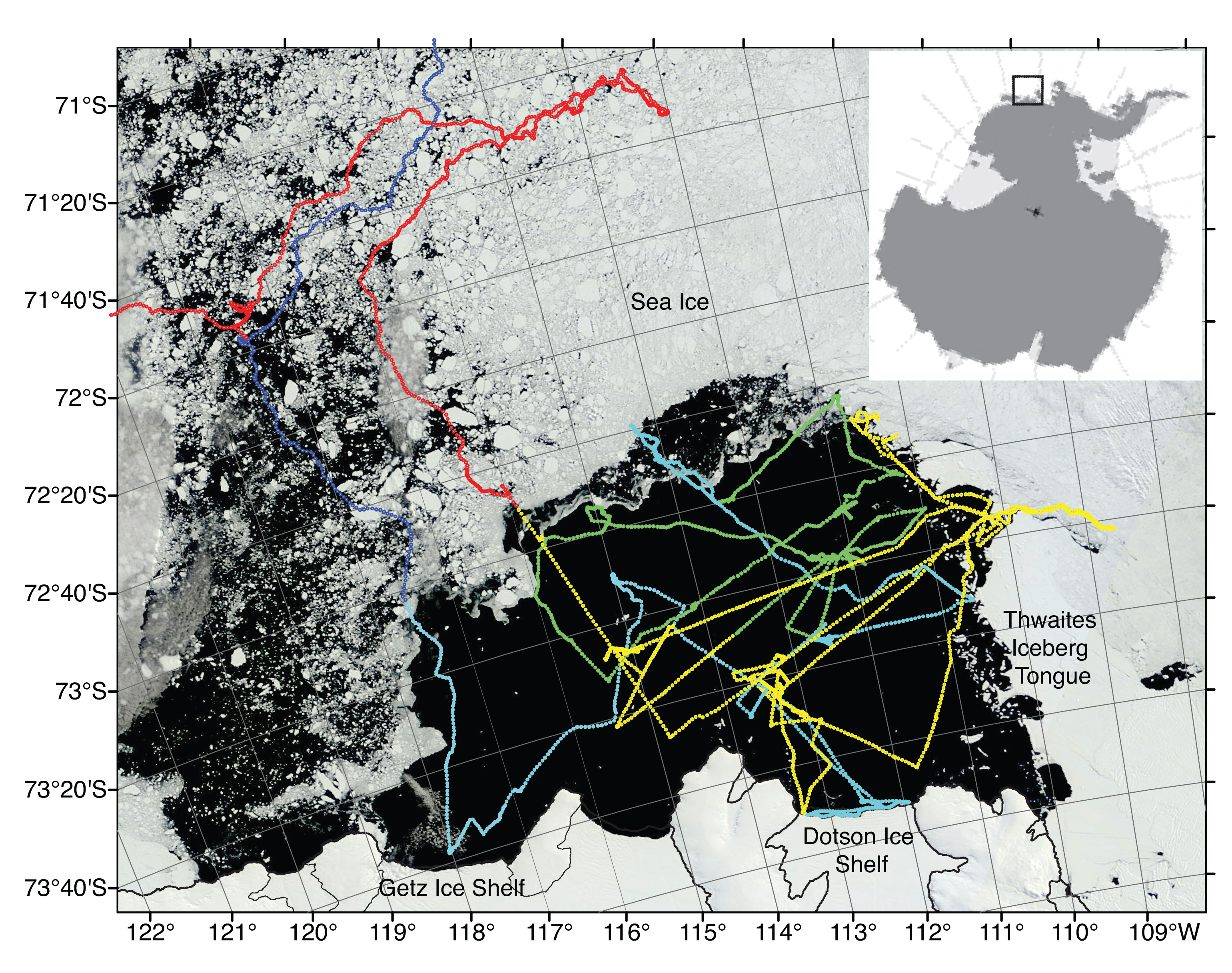 ©2020 Biological and Chemical Oceanography Data Management Office.
©2020 Biological and Chemical Oceanography Data Management Office.Funded by the U.S. National Science Foundation
The Amundsen Sea Polynya is areally the most productive Antarctic polynya, exhibits higher chlorophyll levels during peak bloom and greater interannual variability than the better-studied Ross Sea Polynya ecosystem. Polynyas may be the key to understanding the future of polar regions as their extent is expected to increase with anthropogenic warming. The project will examine 1) sources of iron to the Amundsen Sea Polynya as a function of climate forcing, 2) phytoplankton community structure in relation to iron supply and mixed-layer depths, 3) the efficiency of the biological pump of carbon to depth and 4) the net flux of carbon as a function of climate and micronutrient forcing. The research also will compare results for the Amundsen Sea to existing data synthesis and modeling efforts for the Palmer LTER and Ross Sea. The project will 1) build close scientific collaborations between US and Swedish researchers; 2) investigate climate change implications with broad societal relevance; 3) train new researchers; 4) encourage participation in research science by underrepresented groups, and 5) involve broad dissemination of results via scientific literature and public outreach, including close interactions with NSF-supported PolarTrec and COSEE K-12 teachers.
This project brings together experienced US and Swedish investigators (trace metal and carbon chemists, phytoplankton physiologists, microbial and zooplankton ecologists, and physical oceanographers) to investigate climate controls on carbon dioxide uptake by one of the most productive ecosystems in the Antarctic.
The Amundsen Sea Polynya is the most productive Antarctic polynya per square meter, and exhibits higher chlorophyll levels during peak bloom and greater interannual variability than the better-studied Ross Sea polynya ecosystem to the west.
Polynyas, or recurring areas of seasonally open water surrounded by ice, are foci for energy and material transfer between the atmosphere, polar surface ocean and deep sea. Most help take up large amounts of carbon dioxide from the atmosphere.
These polar ecosystems are characterized by high biological productivity and intense biogeochemical cycling - a bit like an oasis. Polynyas may be the key to understanding the future of polar regions since their extent is expected to increase with anthropogenic warming. On the other hand, if seasonal sea ice disappears completely, the unique nature of polynyas may also be lost.
Regional reductions or growth in sea-ice over the past decade have been extensive and are coupled to climate-sensitive global cycles such as ENSO and the Southern Annular Mode. Without many historical measurements, this regional and interannual variability is our best present-day indication for what controls or “forces” these critical polar ecosystems and their sensitivity to future change.
Variability in the productivity of Antarctic polynyas is high for reasons the science community do not currently understand. The supply of trace metals such as iron is thought to determine phytoplankton community structure and production in the Southern Ocean, particularly in conjunction with mixed-layer depth controls on light limitation. A key question is whether interannual variability is driven by these two climate-sensitive factors, and whether we can expect climate-sensitive shifts in ecosystem function and carbon flux in the future. Understanding critical feedbacks between climate and the marine biosphere becomes increasingly urgent as we project rates of change into the future.

Principal Investigator: Kevin R. Arrigo
Stanford University
Principal Investigator: Hugh W. Ducklow
Marine Biological Laboratory (MBL)
Principal Investigator: Robert M. Sherrell
Rutgers University
Principal Investigator: Sharon E. Stammerjohn
University of Colorado (UCo - INSTAAR)
Principal Investigator: Patricia L. Yager
University of Georgia (UGA)
Co-Principal Investigator: Oscar M.E. Schofield
Rutgers University (Rutgers IMCS)
BCO-DMO Data Manager: Stephen R. Gegg
Woods Hole Oceanographic Institution (WHOI BCO-DMO)